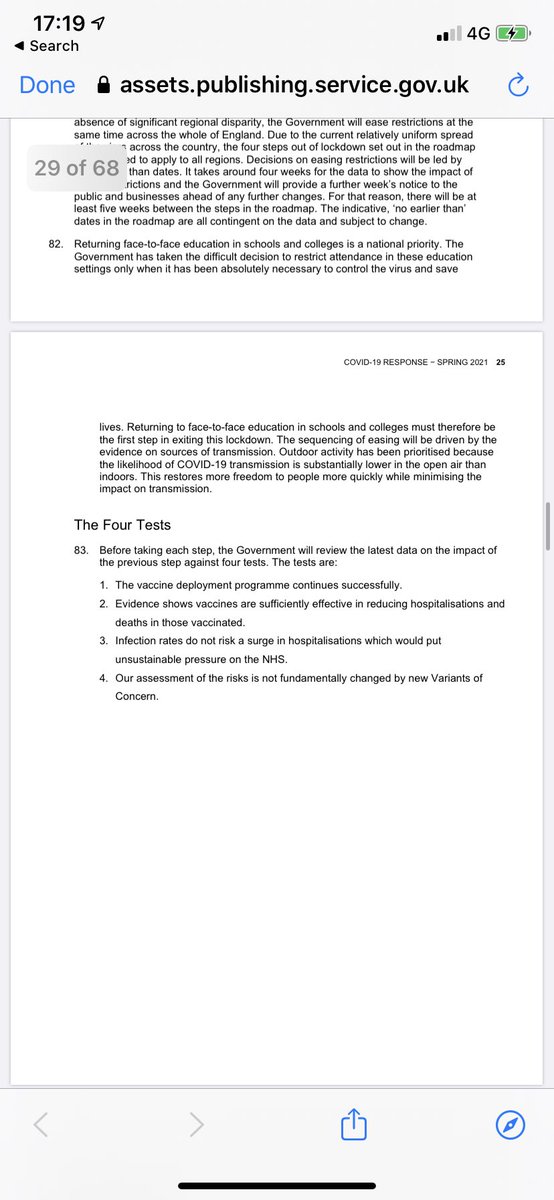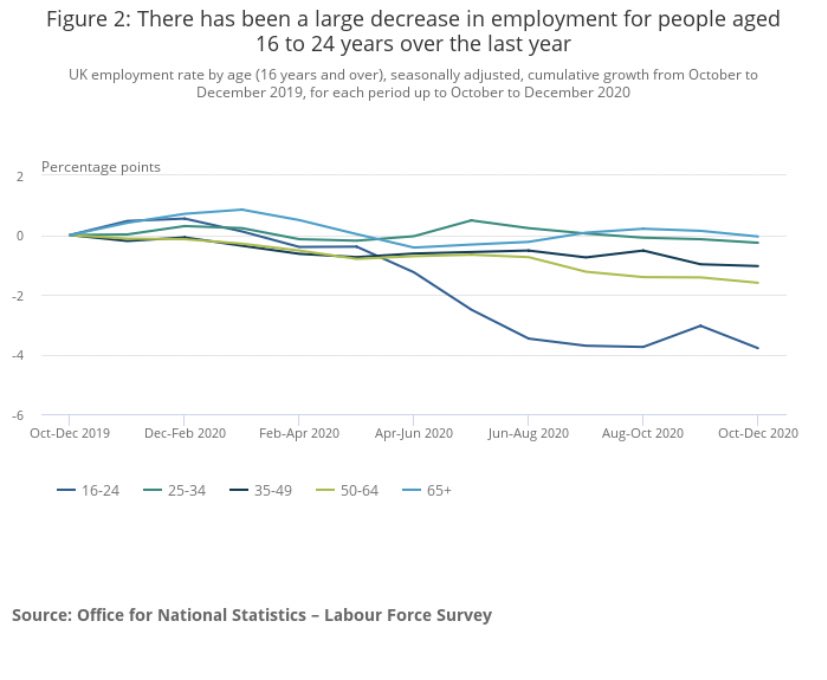
Lots of talk about “the four tests”- but in reality, they’re quite vague, their calculation could be made in several different ways. And the government hasn’t given detail on exactly what they’re looking for. Given that, wonder how immovable the dates will be, in practice. 

Lots of briefing about this being a “data not dates” approach but short of major surges or new variant which causes the same, I suspect in practice it’ll be the dates, not the data metrics which have been set out, which we’ll remember and which will (largely) set the framework.
In reality you can argue tests 1 and 2 have already been met and likely will continue to be, it's really about tests 3 and 4 in the future and with test 3 in particular, it's not clear what the thresholds involved might be, what it is govt would be looking for.
Several Tory MPs have now pressed PM as to what the exact data criteria are behind the four tests. Johnson says they can see what's been published today. But unless I've missed it, nothing which has been published significantly expands on those tests.
The point is what is an acceptable level of hospitalisation? Is it so low that NHS activity is largely back to normal? Or is it something where Covid is still a large part of NHS' daily activity? Different answers to this (effectively test 3) produce v different policy responses.
And it produces very different answers in terms of what happens with the Budget. If the plan is to say greater hospitalisation is acceptable then the NHS is going to need much more surge capacity (and money) to deal with it. Something v important to look out for next week.
I mean, the detail on the four tests is astonishingly slender. They’re referred to repeatedly in the document yet it is virtually the only subject on which there’s no significant elaboration. They’re stated, there’s a graphic and that’s it. 



Also much talk about a cautious approach. The most cautious element is certainly the five week wait between significant relaxations. That said the PM did say the aim is to "remove all limits" on social contacts at some point from 21st June...
And SAGE says: The "relaxation of a significant number of restrictions over 3 months starting from the beginning of April could lead to hospital occupancy higher than the January peak whereas relaxation over 9 months would result in a much smaller peak."
Apr-June is 3 months...
Apr-June is 3 months...
CONCLUSIONS-the "data not dates" and "v cautious" framing isn't really right, it's much more nuanced.
-The document the govt published today was very detailed except on the very thing we've heard so much about- data.
-It was much more detailed about the dates.
-The document the govt published today was very detailed except on the very thing we've heard so much about- data.
-It was much more detailed about the dates.
-The other framing was about caution.
-It's certainly true that there's time (five weeks) between relaxation to measure effects. That is def cautious.
-But the time frame the govt has opted for, most measures relaxed by summer is on the ambitious end of what SAGE/Spi-M discuss.
-It's certainly true that there's time (five weeks) between relaxation to measure effects. That is def cautious.
-But the time frame the govt has opted for, most measures relaxed by summer is on the ambitious end of what SAGE/Spi-M discuss.
Therefore, the framing of much we’ve heard going into this (and which is still being repeated) is hard to sustain.
That’s not to say that the decisions plotted out or the framework outlined are wrong but that it doesn’t really cohere to how it’s been billed or described.
That’s not to say that the decisions plotted out or the framework outlined are wrong but that it doesn’t really cohere to how it’s been billed or described.
• • •
Missing some Tweet in this thread? You can try to
force a refresh





